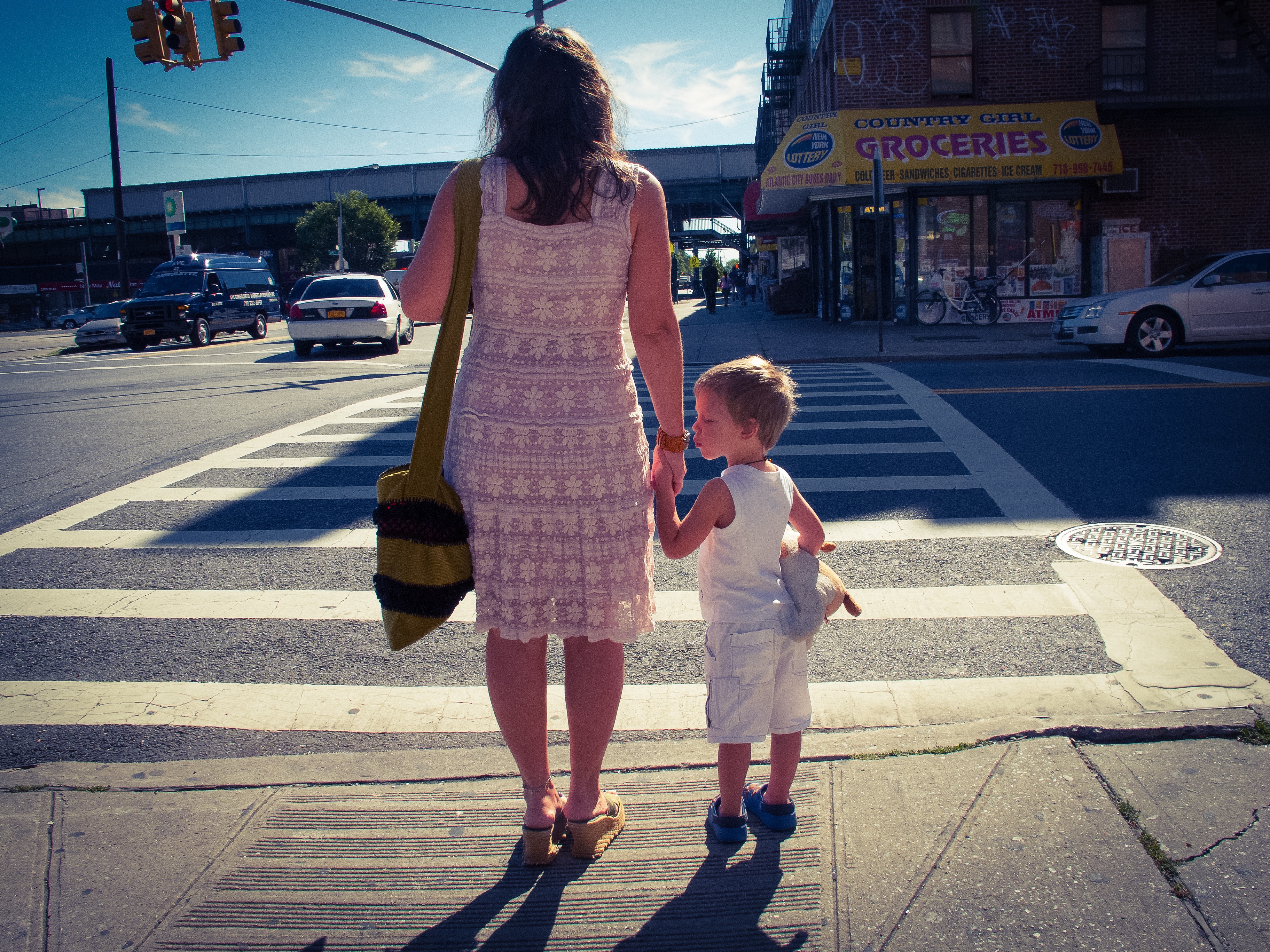
My kids have known about homelessness since the moment they knew about things. They are currently 5 and 8 years old and were gestated, born, and grew up while I was running a drop-in center for homeless young adults. In addition to constantly hearing about my work and people with whom I worked, they came to picnics, holiday parties, talent shows, and many other community events connected to the drop-in center.
They knew by name some of the young adults who lived or panhandled on the streets of Harvard Square. They made pictures for my clients who moved into housing “so they have something pretty on the wall." Their room is decorated with artwork created by homeless young adults; they say “I hope I can be that good at art one day.” One rainy and cold fall morning, my oldest – who was 6 at the time – looked at me over breakfast and said “Rain, rain, go away. Mama’s friends have nowhere to stay.” My children are aware of homelessness, poverty, and injustice – understanding this is part of understanding their mother.
A few months ago, a friend with kids of similar ages as mine came to me for advice. “My kids see people panhandling and ask me why they are asking strangers for money. Then they ask why I don’t give them money. I don’t have any good answers. Can you help?”
Raising children makes you examine everything you think, say, and do through a different lens. It makes you contemplate what messages you are sending and what lessons you are teaching. Our children are always watching us and the world. Because they see the world through clear and open eyes, they often ask questions that take us off guard. They notice the things we have stopped noticing, questioning, or allowing ourselves to care about.
We sigh. We stumble. We stutter. And, we often realize that we don’t actually understand ourselves or the world around us as well as we thought we did. Seeing hardship shakes us – perhaps even incites guilt – and we want to look away. We find it hard to explain that others suffer while we casually go about our day.
My response to my friend was guided by conversations I have had with people who panhandle. They often say the hardest thing about asking strangers for money is not dealing with the weather, their lack of success, or even the insults. The hardest thing, they have said, is feeling invisible. Feeling like people “would rather you didn’t exist” or “walk by you like a piece of trash.” During many events and panels I have participated in, people who have experienced homelessness are asked "How should I respond to people who are panhandling?” The answer is usually a variation of “Even if you can’t or don’t want to give money, always acknowledge us. Always say ‘hello.’ Always look us in the eye. Always see us.”
My advice to my friend echoed these sentiments. We talked about the qualities she wants in herself and wants to model for her kids – kindness, compassion, and humility. We talked about how to explain to children why people experience homelessness. “Sometimes things happen to people, and they don’t have enough money or other supports to keep paying for a place to live.” We talked about how to model kindness and compassion without necessarily giving money to every person you see on the street – that you can always look people in the eye and say “Hello” and “Have a good day!” We talked about giving kids allowance that they can put into categories of “spend, save, give” and helping them decide what to do with their donation money. We talked about purchasing the Spare Change newspaper, a local paper that vendors purchase for 25 cents and sell for a dollar, as a way to support people who are working. We lastly talked about connecting with organizations like Community Cooks, a local group that brings people who are willing to cook or bake together with organizations that need food for their clients. I think we both left the conversation feeling a little less helpless and a little more hopeful.
A few weeks later, I went to CVS with my kids. A young woman sat in front of the store asking for spare change. We walked by and said “Hello,” and when we got into the store my 8 year-old asked, “Mama, do you know why she is homeless? Can we do something for her?” I suggested that we could go back outside and see if she wanted anything to eat or drink from the store. We walked back out the door and went up to the woman.
“Can I ask you two questions?” my daughter asked her.
“Sure,” she replied with a smile.
“What is your name?” my daughter asked.
“My name is Fiona.”
“I have a friend named Fiona!” she exclaimed. Then she looked away, feeling shy.
“We’re going into the store, and I want to know if there is anything you would like to eat or drink that we can get for you.”
Fiona paused for a moment, thinking.
“I would love a bag of Doritos,” she said after a minute.
“I love Doritos!” my daughter beamed. “Do you want regular or Cool Ranch?”
“Regular,” she smiled.
“That’s the kind I like too!” my daughter smiled back.
We went into the store, I gave my kids $2 to purchase the Doritos, and they went back outside to give the bag to Fiona.
“She seems really nice,” my daughter said when she returned. “I hope she finds somewhere nice to stay.”
I think my children understand that homelessness is a situation in which people find themselves, not an identity that defines them. They see people who are panhandling or homeless as people – people who have names, like art, eat Doritos, and have unique skills and talents. I think they understand that homelessness is a combination of circumstance and lack of support. I hope this understanding allows them to continue to respond to people with kindness and compassion as well as a will to combat the systemic causes of homelessness. However, actually changing the system will take more than just my children – it will demand that we teach all of our children to recognize the humanity in others and seek to better understand the circumstances that underlie the imperfections of our world.
Our children are always watching and learning from us. Hopefully, their observations and questions can continue to push us to be the people we want them to someday become.
Learn more about addressing homelessness by listening in to a t3 podcast "Ending Homelessness: Why We Haven't, How We Can."
Image by Leon Fishman (CC BY 2.0).








